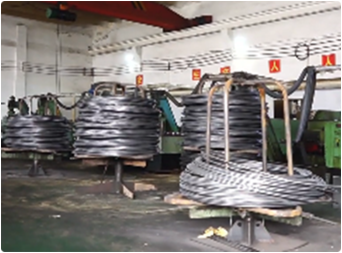Oct . 11, 2024 15:47 Back to list
M8 x 1.25 Threaded Rod Specifications for Various Applications and Projects
Understanding M8 x 1.25 Threaded Rods Applications and Characteristics
Threaded rods are essential components in various industries, serving as versatile fasteners that can be used in countless applications. Among the many types of threaded rods, the M8 x 1.25 threaded rod is particularly noteworthy due to its size and thread specifications. In this article, we will explore what M8 x 1.25 threaded rods are, their specifications, common applications, and some considerations for using them.
What is an M8 x 1.25 Threaded Rod?
An M8 x 1.25 threaded rod is a type of fastener that has a metric diameter of 8 millimeters and a thread pitch of 1.25 millimeters. The 'M' in the designation represents a metric thread profile, which is commonly used in many countries around the world. The pitch of 1.25 mm indicates the distance between threads, determining how tightly or loosely the fastener will mesh with a corresponding nut or hole.
The threaded rod is typically made from various materials, including stainless steel, carbon steel, or alloy steel, which can influence the rod's strength and corrosion resistance. The choice of material is vital depending on the environment in which the threaded rod will be used. For instance, stainless steel is preferable in corrosive environments, while carbon steel might be suitable for indoor applications.
Specifications
An M8 x 1.25 threaded rod generally has the following specifications
- Diameter 8 mm - Thread pitch 1.25 mm - Length Threaded rods come in various lengths, typically ranging from a few centimeters to several meters, allowing for flexibility in different applications. - Material Options include stainless steel, plain steel, and galvanized finishes to provide corrosion resistance. - Strength Grade Threaded rods are categorized by their strength grade, with common grades including 8.8 for carbon steel and A2 or A4 for stainless steel.
Common Applications
M8 x 1.25 threaded rods have a broad range of applications across many fields
1. Construction These rods are extensively used in structural applications where strong joints are required. They can be used to connect beams, columns, and other load-bearing structures, providing stability and strength.
m8 x 1.25 threaded rod

2. Automotive In the automotive industry, M8 x 1.25 threaded rods are often used in the assembly of various components, engine mounts, and suspension systems.
3. Manufacturing Various machines and equipment utilize threaded rods as part of their assembly. These rods can serve as tensioning devices, holding parts securely together.
4. DIY Projects For hobbyists and DIY enthusiasts, M8 x 1.25 threaded rods can be used in custom projects, including furniture construction, outdoor structures, and repairs.
Considerations for Use
When selecting and using M8 x 1.25 threaded rods, a few considerations should be kept in mind
- Load Capacity Always consider the load requirements of the application. Using a rod with insufficient strength can lead to failure and pose safety risks.
- Corrosion Resistance In environments exposed to moisture or chemicals, selecting a corrosion-resistant material is crucial to ensure longevity.
- Thread Compatibility Ensure that the nuts or holes you plan to use are compatible with the M8 x 1.25 threading. Using mismatched threads can lead to stripping and failure.
- Installation Method Depending on the application, various installation methods can be employed, including the use of nuts and washers, welding, or embedding in concrete.
Conclusion
The M8 x 1.25 threaded rod is a versatile and essential component used across many industries. Its specifications, including diameter and pitch, make it suitable for a wide range of applications, from structural connections in construction to precision assemblies in manufacturing. By understanding the characteristics and appropriate usage of M8 x 1.25 threaded rods, engineers, manufacturers, and DIY enthusiasts can ensure reliable and safe assembly in their projects. As always, careful attention to detail in selection and installation will promote durability and effectiveness in any application.
-
The Ubiquitous Reach of DIN934 in Application Realms
NewsMay.16,2025
-
Exploring Different Bolt Types
NewsMay.16,2025
-
Cracking the Code of Sleeve Anchor Mastery
NewsMay.16,2025
-
Clamp Design Principles,Types and Innovations
NewsMay.16,2025
-
Artistry Inspired by the Humble Anchor Bolt
NewsMay.16,2025
-
A Deep Dive into Screw Types
NewsMay.16,2025


